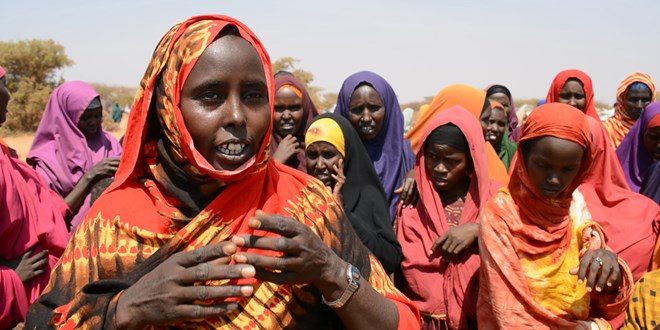
Thursday April 6, 2017
By Michelle Delaney
Somalia is inching closer to famine. Two consecutive seasons of poor rainfall have wreaked havoc on communities, and caused the worst drought the country has seen in 20 years.
Famine is looming in Somalia as drought is causing havoc in many communities. Photo: NRC/ Nashon Tado
#1. If the April rains are lower than expected
The April to June Gu seasonal rains are forecast to be slightly below average. In a worst-case scenario in which the Gu season performs very poorly, purchasing capacity declines to levels seen in 2010/11, and humanitarian aid is unable to reach communities. Food security experts warn that famine would be likely in the worst-affected areas of Somalia.
Some 440,000 people have already been displaced in the past five months alone, many walking long distances to find water and food. That’s over 3,000 people a day being forced to abandon their homes.It’s the highest displacement witnessed since the 2011 famine, when more than 260,000 people died of starvation.
#2. If humanitarian needs spiral downwards
More people are going hungry. The latest food security report reveals a drastic increase in the number of people experiencing ‘crisis’ and ‘emergency’ levels of food insecurity - from 1.1 million six months ago, to a forecast 2.9 million between February and June. Should the situation worsen further, the next phase after ‘emergency’ level is famine.
Disease outbreaks are on the rise. As clean water becomes scarcer, people are resorting to unsafe water sources. This has led to outbreaks of cholera and other waterborne diseases. A large-scale cholera outbreak has struck 11 of 18 regions in the country. Almost 19,000 cases and 443 related deaths have been reported so far. The start of the seasonal Gu rains in around April will cause cases to rise even more.
The toxic mix of these factors, combined with widespread access and security concerns, has created a ticking time bomb in Somalia.
#3. If aid cannot reach communities hit by drought
Somalia is one of the most challenging countries in the world in which to deliver aid. Conflict and insecurity regularly prevent aid organizations delivering assistance in parts of the country. The first two months of 2017 recorded a spike in access challenges, mainly in southern and central Somalia. If access is further restricted, less people will receive humanitarian aid, having potentially lethal consequences on communities affected by the drought in mostly hard-to- reach areas.
Likewise, any scale-up of military action could have negative consequences on the humanitarian situation. Enhanced military action could force people to flee their homes, and could restrict access to communities in need.
#4. If relief organizations cannot deliver in time
Aid organizations are in a race against time to avert a famine. A massive and urgent scale up of humanitarian assistance is needed in the coming weeks to avert a famine in the worst drought-affected areas. Over 300 relief organizations are on the ground responding, however, the scale of the drought is like a freight train hitting a car.
The humanitarian community needs US$825 million to avoid a repeat of Somalia’s 2011 famine. Donors have moved quickly to pledge additional funding to step up assistance. So far, $268 million has been received, while more is in the pipeline.
If action is taken now, famine can be avoided in Somalia. But the humanitarian community’s ability to act sufficiently will depend on the scale of humanitarian needs over the coming weeks and months ahead.